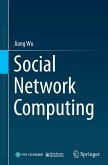This book introduces novel techniques and algorithms necessary to support the formation of social networks. Concepts such as link prediction, graph patterns, recommendation systems based on user reputation, strategic partner selection, collaborative systems and network formation based on 'social brokers' are presented. Chapters cover a wide range of models and algorithms, including graph models and a personalized PageRank model. Extensive experiments and scenarios using real world datasets from GitHub, Facebook, Twitter, Google Plus and the European Union ICT research collaborations serve to enhance reader understanding of the material with clear applications. Each chapter concludes with an analysis and detailed summary. Social Network-Based Recommender Systems is designed as a reference for professionals and researchers working in social network analysis and companies working on recommender systems. Advanced-level students studying computer science, statistics or mathematics will alsofind this books useful as a secondary text.
"The book is quite brief. It contains a lot of rather technical information concentrated around particular topics. ... I highly recommend this book to students, professionals, experts, and others interested in the potential of recommendations taking place within social networks." (P. Navrat, Computing Reviews, computingreviews.com, June, 2016)









